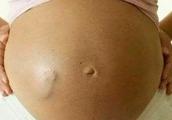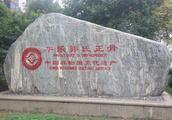
支气管热成形术(bronchial thermoplasty,BT)是一项新的具有较高安全性的支气管镜下治疗技术,具有显著减少气道平滑肌(airway smooth muscle,ASM)、降低ASM收缩力[1-5]、改善支气管哮喘(哮喘)控制、提高患者生活质量、减少药物使用等效果[6-9]。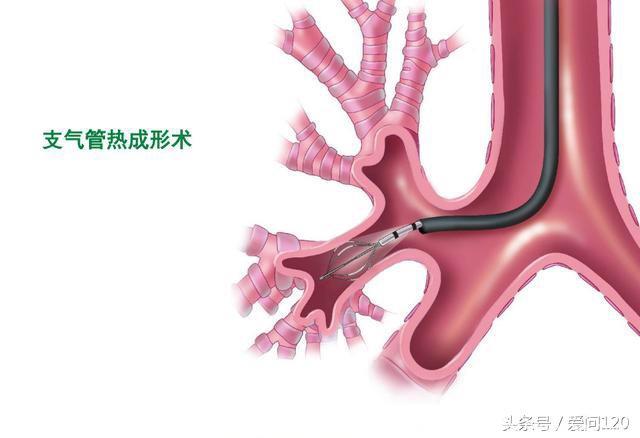
我国于2014年正式批准将该技术用于治疗重症哮喘,其疗效与安全性正逐渐被越来越多的研究所证实[10-13]。本文就BT在哮喘中的应用及其研究进展综述如下。
一、BT的作用机制
哮喘是一种以可逆性气流受限为特征的常见呼吸系统疾病,与气道慢性炎症、气道高反应性和气道重塑有关。ASM是支气管收缩的效应器,由于炎症的刺激和哮喘发作时ASM反复痉挛等原因,ASM数量增多、体积增大、收缩力增强,可导致气道口径缩小、气流受限程度加重,部分气流受限甚至变为不可逆性。ASM增生程度与哮喘严重程度呈正相关[4,14-16]。
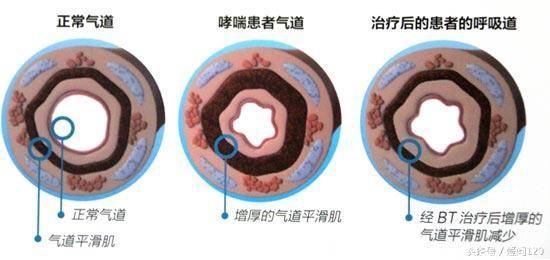
有研究结果显示ASM缺失并不导致生理缺陷,故推测其无重要生理功能,反而在哮喘等疾病中主要起病理性作用,有学者提出如果将ASM去除,那么其所致疾病可能被治愈而不导致其他明显生理改变[17-18]。
BT是一种通过特殊导管电极在指定部位释放射频能量的技术。射频能量转换为热能作用于细胞,可导致细胞膜溶解、蛋白变性、水分蒸发及组织凝固性变性坏死。通过严格控制接触部位、温度、时间及能量等参数,可造成特定部位气道壁上皮细胞脱落、腺体损伤以及ASM凝固性变性坏死,一段时间后,上皮细胞和腺体可修复再生,而ASM退化、消失或被成纤维细胞取代[1-2],从而达到治疗哮喘的目的。
二、BT相关研究
1. 动物实验及体外实验:最早的BT动物实验由Danek等[1]开展,发现以65 ℃及75 ℃烧灼犬气道壁可有效减少ASM,且气道反应性随ASM减少而下降,效果稳定维持3年。Brown等[2]通过烧灼犬气道再次验证BT后气道反应性下降,并观察到气道管径轻度增加,而肺顺应性无明显改变。Cox等在肺癌患者肺叶病理切片中也观察到了BT后ASM的减少[4,19]。通过这些实验,研究者们逐渐认识到BT具有有效减少ASM的作用。
随后Dyrda等[20]用不同温度烧灼牛气道壁,发现55 ℃及以上温度烧灼后气道收缩能力受到明显抑制,而气道舒张不受影响,提出BT可改变肌动蛋白与肌球蛋白特性的假说。该假说认为肌动蛋白和肌球蛋白相互作用引起肌纤维收缩,虽然实验中不能观察到明显的组织病理学改变或细胞凋亡,但因蛋白对温度较敏感,蛋白特性已被改变,从而导致了ASM收缩能力的下降。

这一系列动物实验及体外实验不但为BT治疗哮喘提供了理论依据,还初步证实了BT的安全性,明确了烧灼时间、烧灼温度及烧灼部位等关键参数,为BT应用于人体打下了基础。
2. 临床实验:2004年Miller等[4]在8例肺癌患者中成功实施了BT,这是最早将BT应用于人体的报道,证实了人体对BT的良好耐受性。随后开展的具有较大影响力的几项临床研究包括:可行性研究[21]、哮喘干预研究(asthma intervention research,AIR)[6]、重度哮喘研究(research in severe asthma,RISA)[22]及哮喘干预研究2(asthma intervention research 2,AIR2)[8-9]。BT具体操作步骤既往综述中已有涉及[23],故本文不再详述。值得注意的是,即使治疗效果未达预期,已行BT部位也不应再次行BT治疗。BT治疗一般分3期进行,下一次BT前需全面评估患者是否从上一次BT中恢复,必要时推迟治疗[24],以免增加风险。有研究者建议BT术前应用全身糖皮质激素以减少水肿、炎症等不良反应[21],也有研究者认为术中应用药物减少腺体分泌,可降低手术难度[25],但目前尚无明确的BT术中及围手术期管理方案。几项BT治疗哮喘主要临床研究的纳入标准、研究特点与结果见表1、2。
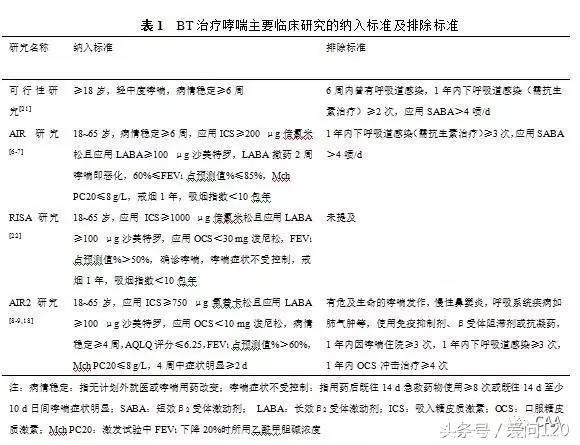
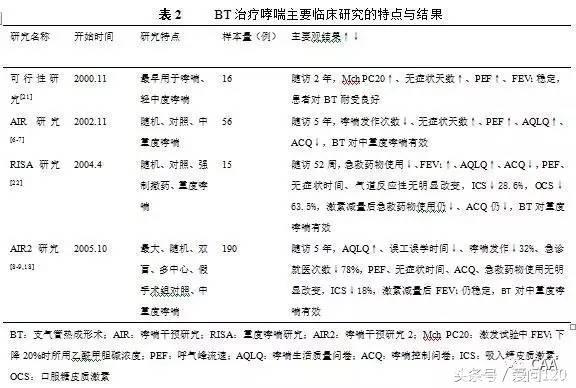
各项研究结果均提示,BT术后短期内哮喘恶化风险增高、呼吸道不良反应增多[6-9,21-22],包括术后呼吸困难、咳嗽、喘息、咳痰、夜间憋醒、咯血、上呼吸道感染、肺不张及肺脓肿等,术后还可出现发热、头痛、声嘶等非典型症状[6-9,21,25]。这些症状一般在7 d内可明显缓解,因此需在术后7 d内加强随访。中重度哮喘患者BT术后约3.4%需要住院治疗,重度哮喘患者则有约15.6%需要住院治疗,住院率与术前哮喘严重程度密切相关[8-9,22,26]。因此,所有行BT治疗的患者,术前应尽可能将哮喘控制在最佳水平,并确保术中及术后密切监护生命体征。目前所有研究均未观察到BT术后长期并发症[25,27],支气管镜及高分辨率CT均未发现BT后支气管扩张或气道狭窄等气道结构改变[6-9,21,26]。
根据这些研究,2010年美国食品药品监督管理局(food and drug administration,FDA)批准将BT用于18岁以上、应用足量ICS和LABA后症状仍控制不佳的重症哮喘患者。且鉴于目前研究纳入患者的局限性,肺气肿及囊性肺纤维化等肺部疾病、近期哮喘急性发作、FEV1占预计值%<65%、反复肺部感染、使用抗凝药等任何可能增加BT治疗风险的情况均应视为BT禁忌证[23]。
3. 最新进展:近2年来国内外发表了多篇BT相关综述或荟萃分析文献[23,28-37],对BT既往研究结果进行了深入挖掘与再思考,也让越来越多的人认识到BT的疗效与安全性。全球哮喘防治创议(global initiative for asthma,GINA)在2011年的《全球哮喘处理和预防策略》中曾提及BT是治疗重症哮喘的一种可选手段,但证据等级仅为D。随着近年来不断涌现的研究结果,GINA在2014年及2015年的指南中将BT的证据等级提升为B,与抗IgE治疗、口服糖皮质激素等并列为哮喘的一种常规治疗手段,建议在部分成人重症哮喘患者中应用,但仍提醒临床工作者需谨慎选择患者。
Facciolongo等[38]2015年新报道了1例BT后短期内反复肺不张的病例,发现肺不张主要由纤维蛋白、中性粒细胞、嗜酸粒细胞、巨噬细胞和支气管上皮细胞等组成的黏液栓导致,推测与BT刺激支气管黏膜炎症反应、改变微血管结构、促进炎症介质释放等密切相关。Balu等[39]报道了1例BT后3 d肺脓肿的病例,但不能明确肺脓肿是否由BT引起。自2014年我国批准BT临床应用以来,国内多家医院先后开展了该项技术,但目前国内的BT病例报道较少。杨震等[40]汇报1例BT治疗重症哮喘的病例,介绍了BT治疗的经验,证实BT可改善哮喘控制及患者肺功能,术后患者仅出现轻微胸痛、发热等短期并发症。
Thomen等[41]通过CT及3He-核磁共振技术定量分析重症哮喘患者肺通气缺损,发现与健康人相比重症哮喘患者肺通气缺损更大,肺段间通气缺损变化也更明显,而BT后患者肺通气缺损可有明显减少。该定量分析技术可能成为指导阻塞性肺疾病临床治疗的一项有效手段。Kirby等[42]利用光学相干断层扫描技术(optical coherence tomography,OCT)及组织活检随访2例BT后患者2年。其中1例患者术前气道上皮炎症明显,术后气道出现大量分泌物与上皮细胞脱落,术后3周及6周时上皮下胶原蛋白沉积较厚,6个月及2年时气道上皮炎症再发,气道壁较6周时明显增厚,哮喘症状再发,FEV1较前恶化。另1例患者术前气道上皮无明显炎症,术后3周气道壁仅一过性水肿,6个月及2年时气道上皮及上皮下胶原沉积正常,气道壁2年后仍明显比术前更薄,哮喘症状及FEV1改善效果持续2年。该研究可能提示BT疗效与气道炎症、胶原蛋白沉积及气道壁厚度相关。
Chakir等[43]利用组织活检对17例BT术后患者进行随访,发现BT术前患者气道I型胶原蛋白沉积厚度达(6.8±0.3)μm,术后2~14周减少到(4.3±0.2)μm,且在术后7~22周维持于(4.4±0.4)μm。可见BT不仅减少ASM,还可减少气道胶原蛋白沉积,但哮喘症状的改善与组织病理学改变间的具体关联有待进一步研究。Denner等[44]通过组织活检与肺泡灌洗随访了11例患者,发现BT后ASM肌动蛋白表达减少,且肺泡灌洗液中转化生长因子-β1(transforming growth factor-β1,TGF-β1)浓度下降,调节激活正常T细胞表达和分泌因子(regulated upon activation in normal T-cell expressed and secreted,RANTES)浓度下降,肿瘤坏死因子相关的凋亡诱导配体(TNF-related apoptosis-inducing ligand,TRAIL)浓度增加。可见BT确实对肌动蛋白、气道炎症及细胞凋亡等多方面产生影响,但完整的信号通路及该影响是否长期存在仍有待研究。Keglowich等[45]报道ASM除产生炎症因子导致气道炎症加重外,还产生促血管生成因子促进气道重塑。BT通过减少ASM从而减少血管生成因子的产生并延缓气道重塑也可能成为BT治疗哮喘的一项作用机制。
Bicknell等[46]统计临床患者的BT治疗效果后发现仅50%患者实现治疗降级、哮喘控制及发作减少等临床获益,并未达到AIR2研究所报道的73%,可能因为临床患者中存在部分不符合AIR2试验纳入标准且病情更重的患者。其他正在开展的临床研究包括:BT治疗重度持续哮喘的研究[47]、BT对神经及气道黏膜影响的研究[48]及BT作用靶点的研究[49],但目前尚无结果汇报。
另外一些研究则从经济学角度阐述了BT的作用[50-52],认为从长远看,BT治疗重症哮喘是符合经济学效益及患者需求的。但由于患者病情严重程度、治疗意愿、医疗保险、各国医疗花费上的不同,该结果不应直接借鉴,符合中国国情的BT经济学研究仍有待进行。
三、总结与展望
目前治疗哮喘主要通过药物减轻气道炎症和松弛支气管平滑肌起作用,无法逆转哮喘引起的气道重塑,因此无法从根本上阻止哮喘患者病情迁延恶化[53]。BT是哮喘治疗的一种有力补充,是哮喘患者个性化治疗的新选择[54],具有减少哮喘发作、改善哮喘控制、提高患者生活质量、减少药物使用等疗效,效果可稳定维持5年以上[55],从长期来看还可有效减轻个人与社会的经济负担[50]。BT有短期增加哮喘发作及呼吸系统不适的风险,但目前未发现远期并发症或支气管结构改变。其治疗哮喘的机制是多方面的,目前被广泛认可的机制包括ASM减少及ASM收缩功能改变,其他可能的机制还包括气道上皮细胞改变、胶原蛋白沉积减少、炎性介质分泌减少、血管生成减少、细胞凋亡改变及气道神经末梢改变等,但这些机制均有待进一步研究证实。
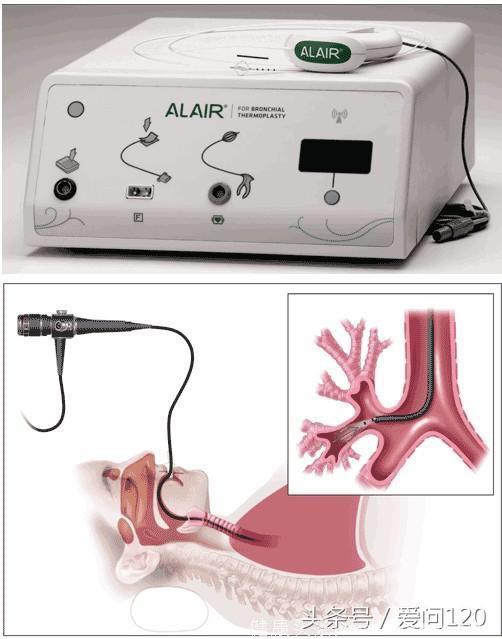
目前的BT相关研究最长随访时间仅为5年,且部分研究不能排除主观因素对结果的影响,需谨慎解读其相关结果[56]。BT的疗效与安全性仍需更长期的随访结果、大样本且设计严谨的随机双盲实验以及临床患者的登记研究来证实。患者选择范围、术中与围手术期管理、术后撤药方案及疗效监测指标的选择均有待进一步改进。
参考文献
1.Danek CJ, Lombard CM, Dungworth DL, et al. Reduction in airway hyperresponsiveness to methacholine by the application of RF energy in dogs[J]. J Appl Physiol, 2004, 97(5):1946-1953. PMID:15258133
2.Brown RH, Wizeman W, Danek C, et al. Effect of bronchial thermoplasty on airway distensibility[J]. Eur Respir J, 2005, 26(2):277-282. PMID:16055876
3.Brown RH, Wizeman W, Danek C, et al. In vivo evaluation of the effectiveness of bronchial thermoplasty with computed tomography[J]. J Appl Physiol(1985), 2005, 98(5):1603-1606. PMID:15718404
4.Cox PG, Miller J, Mitzner W, et al. Radiofrequency ablation of airway smooth muscle for sustained treatment of asthma: preliminary investjgation[J]. Eur Respir J, 2004, 24(4):659-663. PMID:15459147
5.Pretolani M, Dombret MC, Thabut G, et al. Reduction of airway smooth muscle mass by bronchial thermoplasty in patients with severe asthma[J]. Am J Respir Crit Care Med, 2014, 190(12):1452-1454. PMID:25496106
6.Cox G, Thomson N, Rubin AS, et al. Asthma control during the year after bronchial thermoplasty[J]. N Engl J Med, 2007, 356:1327-1337. PMID:17392302
7.Thomson N, Rubin A, Niven RM, et al. Long-term(5year) safety of bronchial thermoplasty: Asthma intervention research(AIR) trial[J]. BMC Pulmonary Med, 2011, 11:8. PMID:21314924
8.Castro M, Rubin A, Laviolette M, et al. Effectiveness and safety of bronchial thermoplasty in the treatment of severe asthma: a multicenter, randomized, double-blind, sham-controlled clinical trial[J]. Am J Respir Crit Care Med, 2010, 181:116-124. PMID:19815809
9.Castro M,Rubin A,Laviolette M,et al. Persistenceof effectiveness of bronchial thermoplasty in patients with severe asthma[J]. Ann Allergy Asthma Immunol, 2011, 107(1):65-70. PMID:21704887
10.Stokes JR. Promising future therapies for asthma[J]. Int Immunopharmacol, 2014, 23(1):373-377. PMID:24957689
11.Rochat T, Chappuis-Gisin E, Ongaro G, et al. Pulmonary. High tech in pulmonary medicine: GeneXpert, coils and bronchial thermoplasty[J]. Rev Med Suisse, 2014, 10:123-126. PMID:24558916
12.Kaukel P, Herth FJ, Schuhmann M. Bronchial thermoplasty: interventional therapy in asthma[J]. Ther Adv Respir Dis, 2014, 8(1):22-29. PMID:24334336
13.Sumino K, Castro M. Bronchial thermoplasty: safe for our severe asthma patients[J]? Ann Allergy Asthma Immunol, 2013, 111(5):311-312. PMID:24125131
14.Carroll N, Elliot J, Morton A, et al. The structure of large and small airways in nonfatal and fatal asthma[J]. Am Rev of Respir Dis, 1993, 147:405-410. PMID:8430966
15.Berger P, Girodet PO, Manuel Tunon-de-Lara J. Mast cellmyositis: a new feature of allergic asthma[J]? Allergy, 2005, 60(10):1238-1240. PMID:16134988
16.Benayoun L, Druilhe A, Dombret MC, et al. Airway structural alterations selectively associated with severe asthma[J]. Am J Respir Crit Care Med, 2003, 167:1360-1368. PMID:12531777
17.Mitzner W. Airway smooth muscle: the appendix of the lung[J]. Am J Respir Crit Care Med, 2004, 169(7):787-790. PMID:14742304
18.Seow CY,Fredberg JJ. Historical perspective on airway smooth muscle: the saga of a frustrated cell[J]. J Appl Physiol, 2001, 91(2):938-952. PMID:11457813
19.Miller JD, Cox G, Vincic L, et al. A prospective feasibility study of bronchial thermoplasty in the human airway[J]. Chest, 2005, 127(6):1999-2006. PMID:15947312
20.Dyrda P, Tazzeo T, DoHarris L, et al. Acute response of airway muscle to extreme temperature includes disruption of actin-myosin interaction[J]. Am J Respir Cell Mol Biol, 2011, 44:213-221. PMID:20395634
21.Cox G,Miller JD,McWilliams A,et al. Bronchial thermoplasty for asthma[J]. Am J Respir Crit Care Med, 2006, 173(9):965-969. PMID:16456145
22.Pavord ID, Cox G, Thomson NC, et al. Safety and efficacy of bronchial thermoplasty in symptomatic, severe asthma[J]. Am J Respir Crit Care Med, 2007, 176(12):1185-1191. PMID:17901415
23.王坚,叶伶,叶茂松,等.支气管热成形术在支气管哮喘治疗中的应用进展[J].中华结核和呼吸杂志, 2015, 38(4):304-306.
24.Castro M, Musani AI, Mayse ML, et al. Bronchial thermoplasty: a novel technique in the treatment of severe asthma[J]. Ther Adv Respir Dis, 2010, 4(2):101-116. PMID:20435668
25.Dombret MC,Alagha K,Philippe Boulet L, et al. Bronchialthermoplasty: a new therapeutic option for the treatmentofsevere,uncontrolledasthmainadults[J]. Eur Respir Rev, 2014, 23(134):510-518. PMID:25445950
26.Wechsler ME, Laviolette M, Rubin AS, et al. Bronchial thermoplasty: long-term safety and effectiveness in patients with severe persistent asthma[J]. J Allergy Clin Immunol, 2013, 132:1295-1302. PMID:23998657
27.Pavord ID, Thomson NC, Niven RM, et al. Safety of bronchial thermoplasty in patients with severe refractory asthma[J]. Ann Allergy Asthma Immunol, 2013, 111:402-407. PMID:24125149
28.Singh SK, Tiwari KK. Bronchial thermoplasty: a non-pharmacological approach[J]. Clin Respir J, 2015. PMID:25919949
29.Kane B, Fowler SJ, Niven R. Refractory asthma - beyond step 5, the role of new and emerging adjuvant therapies[J]. Chron Respir Dis, 2015, 12(1):69-77. PMID:25492977
30.Dheda K, Koegelenberg CF, Esmail A, et al. Recommendations for the use of bronchial thermoplasty in the management of severe asthma[J]. S Afr Med J, 2015, 105(9):726-732. PMID:26428967
31.Dunn R, Wechsler ME. Reducing asthma attacks in patients with severe asthma: The role of bronchial thermoplasty[J]. Allergy Asthma Proc, 2015, 36(4):242-250. PMID:26108080
32.Zhou JP, Feng Y, Wang Q, et al. Long-term efficacy and safety of bronchial thermoplasty in patients with moderate-to-severe persistent asthma: a systemic review and meta-analysis[J]. J Asthma, 2015:1-7. PMID:26383773
33.Laxmanan B, Hogarth DK. Bronchial thermoplasty in asthma: current perspectives[J]. J Asthma Allergy, 2015, 8:39-49. PMID:26028976
34.Heinen V, Schleich F, Duysinx B, et al. Bronchial thermoplasty: a real advancement in the treatment of asthma[J]. Rev Med Suisse, 2014, 10(439):1544, 1546-1548. PMID:25272671
35.Dombret MC, Alagha K, Boulet LP, et al. Bronchial thermoplasty: a new therapeutic option for the treatment of severe, uncontrolled asthma in adults[J]. Eur Respir Rev, 2014, 23(134):510-518. PMID:25445950
36.Kynyk J, Benninger C, Wood KL. Bronchial thermoplasty[J]. Otolaryngol Clin North Am, 2014, 47(1):77-86. PMID:24286681
37.陈兢兢,李静.支气管热成形术研究进展与争议[J].实用医学杂志, 2015, 31(11):1874-1876.
38.Facciolongo N, Menzella F, Lusuardi M, et al. Recurrent lung atelectasis from fibrin plugs as a very early complication of bronchial thermoplasty: a case report[J]. Multidiscip Respir Med, 2015, 10(1):9. PMID:25852934
39.Balu A, Ryan D, Niven R. Lung abscess as a complication of bronchial thermoplasty[J]. J Asthma, 2015:1-3. PMID:25766745
40.杨震,朱强,田庆,等.支气管热成形术治疗重度哮喘1例[J].解放军医学院学报, 2014, 35(12):1261-1264.
41.Thomen RP, Sheshadri A, Quirk JD, et al. Regional ventilation changes in severe asthma after bronchial thermoplasty with (3)He MR imaging and CT[J]. Radiology, 2015, 274(1):250-259. PMID:25144646
42.Kirby M, Ohtani K, Lopez Lisbona RM, et al. Bronchial thermoplasty in asthma: 2-year follow-up using optical coherence tomography[J]. Eur Respir J, 2015, 46(3):859-862. PMID:26022958
43.Chakir J, Haj-Salem I, Gras D, et al. Effects of Bronchial Thermoplasty on Airway Smooth Muscle and Collagen Deposition in Asthma[J]. Ann Am Thorac Soc, 2015, 12(11):1612-1618. PMID:26325484
44.Denner DR, Doeing DC, Hogarth DK, et al. Airway Inflammation after Bronchial Thermoplasty for Severe Asthma[J]. Ann Am Thorac Soc, 2015, 12(9):1302-1309. PMID:26230374
45.Keglowich LF, Borger P. The Three A's in Asthma - Airway Smooth Muscle, Airway Remodeling & Angiogenesis[J]. Open Respir Med J, 2015, 9:70-80. PMID:26106455
46.Bicknell S, Chaudhuri R, Lee N, et al. Effectiveness of bronchial thermoplasty in severe asthma in 'real life' patients compared with those recruited to clinical trials in the same centre[J]. Ther Adv Respir Dis, 2015, 9(6):267-271. PMID:26307767
47.Boston Scientific Corportation. Bronchial Thermoplasty in Severe Persistent Asthma (PAS2). Available from: https://clinicaltrials.gov/show/NCT01350336 (Mar 30, 2015) (accessed Nov 07, 2015).
48.Arcispedale Santa Maria Nuova-IRCCS. Bronchial Thermoplasty: Effect on Neuronal and Chemosensitive Component of the Bronchial Mucosa (BT-ASMN). Available from: https://clinicaltrials.gov/ct2/show/NCT01839591 (Mar 31, 2014) (accessed Nov 07, 2015).
49.Academisch Medisch Centrum-Universiteit van Amsterdam (AMC-UvA). Unravelling Targets of Therapy in BronchialThermoplasty in Severe Asthma (TASMA). Available from: https://clinicaltrials.gov/ct2/show/NCT02225392 (Jun 23, 2015) (accessed Nov 07, 2015).
50.Menzella F, Zucchi L, Piro R, et al. A budget impact analysis of bronchial thermoplasty for severe asthma in clinical practice[J]. Adv Ther, 2014, 31(7):751-761. PMID:25009004
51.Zein JG, Menegay MC, Singer ME, et al. Cost effectiveness of bronchial thermoplasty in patients with severe uncontrolled asthma[J]. J Asthma, 2015:1-7. PMID:26377375
52.Cangelosi MJ, Ortendahl JD, Meckley LM, et al. Cost-effectiveness of bronchial thermoplasty in commercially-insured patients with poorly controlled, severe, persistent asthma[J]. Expert Rev Pharmacoecon Outcomes Res, 2015, 15(2):357-364. PMID:25363000
53.Berair R, Brightling CE. Asthma therapy and its effect on airway remodeling[J]. Drugs, 2014, 74(12):1345-1369. PMID:25056652
54.Kane B, Fowler SJ, Niven R. Refractory asthma-beyond step 5, the role of new and emerging adjuvant therapies[J]. Chron Respir Dis, 2015, 12(1):69-77. PMID:25492977
55.Sheshadri A, McKenzie M, Castro M. Critical review of bronchial thermoplasty: where should it fit into asthma therapy[J]? Curr Allergy Asthma Rep, 2014, 14(11):470. PMID:25189294
56.Iyer VN, Lim KG. Bronchial thermoplasty: reappraising the evidence (or lack thereof)[J]. Chest, 2014, 146(1):17-21. PMID:25010960

